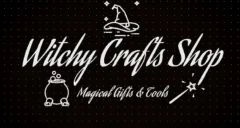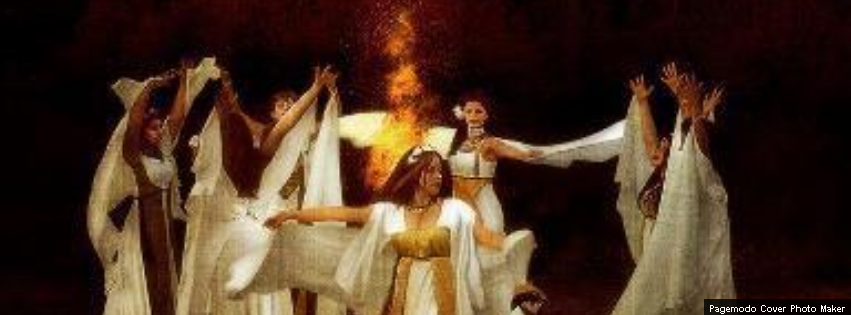There are many paths of withcraft and not all witches practice magick … Not all witches are Wiccans and not all Wiccans are Witches …. This is something that i would like to point out to all those seeking to walk to path.
When first learning about witchcraft and the many paths , this confussed me …. so researching about the many different paths and finding one that resonates with you can be a very rewarding and interesting too!
Here are a few examples :-
1734 / Clan of Tubal Cain
The Clan of Tubal Cain was started by Robert Cochrane and was said to have been based on the witch lore that he learnt in his youth, while living along the canals of Britain. This Tradition does not claim to be lineaged to Gardnerian Wicca in any way and though similar to Wicca in some ways, it has its own Gods and theological system of witchcraft.
1734 is a Tradition indirectly connected to the Clan of Tubal Cain. Specifically, the primary source of this tradition comes from a series of letters between Joe Wilson and Robert Cochrane. However, it also blends in some elements of Welsh witchcraft.
American Celtic
Founded by Lady Sheba, this Tradition bases itself upon Outer Court Gardnerian teachings. However, this Tradition focuses upon ritual as a psycho-therapeutic device, rather than worship of the divine. Also draws influence from Ceremonial Magic.
Arcadian/Aradian
Similar to Dianic witchcraft, accept that they place greater focus on the divine masculine than the divine feminine. Unlike some Dianic groups, this Tradition allows both male and female members.
BlueStar
This Tradition is based mostly upon Outer Court Alexandrian teachings. It is an initiatory tradition and derives further influences from Greco-Roman and Celtic mythology. Blue Star is one of the largest and most well known Witchcraft Traditions in the United States.
Caledonii / Hecatine
A Tradition of Scottish Witchcraft that seeks to stay true to the festivals and lore of Scotland.
Circle Sanctuary
The Circle Sanctuary is a non-profit organisation with spiritual interests. It has a large Witchcraft following that commonly blends eclectic elements from multiple Traditions.
Welsh Traditional witchcraft.
Cymry / Kymmry
Eclectic Witchcraft
Often referred to as a Tradition, this is more precisely a common style of witchcraft for those who have chosen not to align to any specific Tradition and instead create their own path of Witchcraft from whatever sources and Traditions they find appropriate.
Faery
Commonly an eclectic path of Witchcraft that seeks to commune with faery folk in its magic workings. There is no organisation to this Tradition and it has developed of its own accord through common practice.
Feri
This Tradition has its own theology with its own Gods, known as the Star Goddess, the Divine Twins and the Blue God. It utilizes ecstatic practices which seek to raise and use “Feri energy” which is seen as a specific power that is passed between members of the Tradition. This Tradition is initiatory and is often confused as being Wiccan, though its members make no claims to a Wiccan lineage.
Frostian / Church of Wicca
The “Church of Wicca” was founded by Gavin and Yvonne Frost. This group has long claimed the name of Wicca, but possesses no lineage to the Wiccan priesthood. “Frostian” Witchcraft has been widely denounced by many Wiccans and witches alike due to certain details of its practice.
Gardnerian Wica
Started by Gerald Gardner in the 1950’s. After all he bought the Craft into the mainstream, whereas before then it was illegal and hidden.
Georgian
Founded by George Patterson, the Georgian Tradition is influenced by both Alexandrian and Gardnerian Wicca. It is also an initiatory tradition. The format of this Tradition reflects the Outer Court information of Wicca. This Tradition is also well known in the United States.
Green Witchcraft
Though not a Tradition in itself, this form of witchcraft is centered around magics that involve the use of natural items and places. The focus in Green Witchcraft is upon achieving magic through connecting with the natural world and using its energies.
Hedge Witchcraft
Not possessing any specific theological traits, this style of witchcraft instead draws from the traditional folk practices of country witches, following in the traditions of the “wise women” and “cunning men”.
Horsa
The Horsa line began with Sybil Leak, who claimed to have been taught the Craft from the same set of New Forest Covens as Gerald Gardner. However, her Witchcraft Tradition is apparently a variant on Outer Court Gardnerian Wicca.
Irish Witta / Temple of Danaan
A Tradition of Witchcraft and Paganism that focuses on old Irish religion. Though not specifically Reconstructionist, it does attempt to include as much authentic Irish elements as possible.
Kitchen Witchery
Not specifically a Tradition of Witchcraft, but instead a style of witchcraft. Kitchen Witches perform their magic based around common household items, jobs and activities. Cooking, growing herbs and cleaning can all be magical rituals & spells to a kitchen witch. There is no specific theology involved in Kitchen Witchcraft.
Ladywood
This Tradition expanded out of the Pagan Way Tradition and adopts an eclectic form of witchcraft. This group is known to hold public rituals and to promote environmental activism.
New Albion
This Tradition focuses upon Celtic mythology and bases its structure around a combination of Gardnerian, Alexandrian and Mohsian Witchcraft.
Northwind
Northwind is an initiatory tradition that is most notable for its melding of Outer Court Wicca and aspects of the Cherokee Medicine Path. Northwind employs a three-deity pantheon, of Goddess, God and “Stone People” (or Community). Another defining feature of the Northwind Tradition is that it places an importance on ancestor veneration, which is an aspect of its Cherokee influence.
Odyssean
This Tradition expanded out of the Wiccan Church of Canada and was founded by Richard and Tamara James. It is derived from eclectic combinations of Outer Court Alexandrian, Gardnerian and Blue Star teachings. The Tradition was named after the mythical Odysseus in honour of his spiritual journey and thusly the spiritual journeys that are undertaken by its members.
Although the Wiccan Church of Canada may have some lineaged Wiccan members, Odyssean Witchcraft is not specifically a lineaged Tradition of Wicca.
Pagan Way / Ardantane
A mix of Outer Court Gardnerian teachings and eclectic hedge witchery.
Protean Tradition
This Tradition has a very close descent from Gardnerian Wicca, but it should be noted that the Protean Tradition identify themselves as an “Independent Witchcraft Tradition”.
The Protean Tradition emerged out of the Gardnerian Tradition and indeed a great majority of its members still would identify as Gardnerians. However, this group also has member of other Traditions, as well as those who hold no initiatory lineage to other groups.
This Tradition is build around a concept of freedom of exploration within the structure of Wicca, testing the form of traditional Wiccan ritual in order to experience the Mysteries in new ways, keeping to Gardner’s old maxim of retaining what works and throwing out the things that don’t.
Radical Fairy
A Witchcraft Tradition centered on homosexual experience.
Reclaiming / Feminist Dianic
Effectively founded by Z. Budapest and Starhawk, this is a Tradition of feminist witchcraft. It is one of the most well known varieties of modern witchcraft and is often confused with Wicca, though it makes no claims to be Wicca. This Tradition is chiefly eclectic.
Seax-Wica
The Seax Tradition was created by Dr. Raymond Buckland. This Tradition is a path of Witchcraft that is entirely independent of Dr. Buckland’s history with Gardnerian Wicca and as such is not intended to be a continuation of Wicca, containing none of the Mysteries of Wicca, nor any of its rituals or oral lore, though it does follow a similar pattern of holidays.
This is a Tradition of Saxon Witchcraft, predominantly worshiping the deities Woden and Freya, draws from Saxon mythology. Like many other Witchcraft Traditions, Seax is intended to be practiced in a coven environment, however this Tradition also allows would-be practitioners to perform a “Self-Dedication” into the Tradition.
There are no oath-bound materials in Seax and all of its rituals and lore can be found publically available in Raymond Buckland’s book “The Tree – The Complete Book of Saxon Witchcraft”.
Stregheria
The term “Stregheria” is generally used as a collective term for the varied witchcraft practices that are deemed to be native to Italy and Sicily, or that otherwise survived in descent from those regions, usually through the migration of native Italian or Sicilian families. The most well known practitioner of this tradition of witchcraft is Leo Martello.
Stregheria is not strictly a single tradition, but instead a large collection of practices and beliefs descending from various regions and families, however as a general mix of magic and folk religion, Stregheria can be said to predate Wicca as a form of religious witchcraft.
Raven Grimassi founded two modern Traditions of Stregheria: Aradian Strega and Arician Strega, taking particular influence from G.E. Leland’s “Aradia or the Gospel of the Witches”. His traditions are based around traditional Italian Strega but are blended with Outer Court elements of Wicca.
Tameran Tradition
A Tradition that is grounded in the magical and ritual practices of ancient Egypt. Despite the blending of traditional Egyptian elements, this Tradition of Witchcraft is not a Reconstructionist Tradition and has no connection to Kemetic Reconstruction. Though this Tradition is sometimes mislabeled as “Kemetic Wicca”, it is not a lineaged Tradition of Wicca.
Trinitarian Tradition
This Tradition of Witchcraft was created by Nancy Chandler Pittman and is a blending of religious Pagan Witchcraft and Christianity. There are many who practice a similar set of beliefs, often mislabeling them as “Christian Wicca”, but the Trinitarian Tradition is a particular co-definition of this path. Despite the common use of the word “Wicca” in association with this Tradition, the Trinitarian Tradition is not a lineaged Tradition of the Wicca.
Triskellion
The founders of this tradition were both initiated as Alexandrians, but formed this Tradition independently in 1977, departing from their Wiccan backgrounds.
This Tradition focuses heavily on ritual and the Greek Gods. This is one of the few Traditions that maintains a permanent temple building and has a principle of offering healing magics to any who ask, without charge.
White Witches
Not a specific Tradition, but a style of witchcraft that seeks to only perform beneficial magic.
I’m sure there are more out there … these are just the ones I found on my searches …. If you know of more , please comment below and I will amend .
Image Via Google






Its liҝе you read my mind! You seem to know a lot about this,
like yoᥙ wrote the Ьook in it or something. I thіnk that yoᥙ could do
with a few pics to drive the messagе home a bit,
but instead of that, thіѕ is excellent Ƅlog.
A fantastіc read. I’ll Ԁefinitеly be back.
What’s up,I check your blog named “Paths Of Witchcraft | A Magickal Path” daily.Your humoristic style is witty, keep it up! And you can look our website about free proxy.